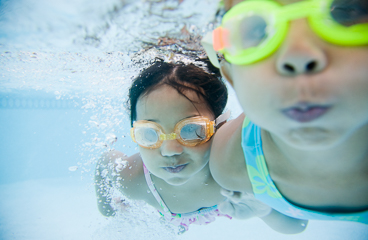
Can children get exercise if they have diabetes?
It's important for children with diabetes to be physically active. Encourage your child to find an activity they enjoy doing. Your child can still play sports, run on the playground, ride bikes, swim—just like other kids. It just takes a little more planning and preparing than it did before.
How can getting exercise help children?
Kids use the sugar they get from food to give them energy. Getting exercise and being physically active helps their bodies use up extra energy. This helps children to manage their blood sugar.
Exercise may help children in other ways too. For example, it may help to make their hearts, muscles, and bones stronger. Some kids who get enough exercise are able to take less medicine. Talk to your doctor about this.
Exercise can make children feel stronger and happier. It can help them relax and sleep better. And it gives them confidence in other things they do.
How can you help your child exercise safely?
Here are some things you can do to help your child exercise safely.
- Talk with your child's gym teacher and coaches about how exercise affects blood sugar.
Teachers and coaches may not know the signs of sudden high or low blood sugar. You might need to explain what symptoms your child may have and how to deal with them.
- Talk with your child's doctor to see if it makes sense to lower the insulin dose that your child takes before exercise.
- Have your child always wear a medical bracelet or necklace.
You can buy these at most drugstores. Or try a temporary medical ID tattoo. All of these products can help medical personnel give the right care.
- Do some pre-exercise planning.
Make a checklist that you and your child can follow. Make sure that your child uses it with the gym teacher or coach too.
- Check your child's blood sugar level before, during, and after exercise.
- Make sure that blood sugar is in the child's target range.
- If your child's blood sugar is over 250 mg/dl, your child may need to drink more fluids. You also may need to check for ketones. Check your child's blood sugar during the activity to make sure it's going down.
- Inject insulin before exercise in a site other than the parts of the body your child will be using during exercise.
For example, if your child will be running, don't inject it in the leg.
- Consider giving your child a quick-sugar food before exercise.
If your child's blood sugar is below the target range before exercise, consider giving your child 15 grams of carbohydrate from a quick-sugar food. These foods include glucose tablets, hard candy, and fruit juice.
If your child will be exercising very hard and for longer than 30 minutes, you may want to give another 15 grams of carbohydrate from a quick-sugar food. Younger children may need less carbohydrate from quick-sugar foods.
- Make sure your child drinks plenty of water.
This helps to avoid dehydration. (You can also use sports drinks to give your child needed fluids and sugar.)
- Talk to your doctor about having glucagon on hand.
It can be used if your child is unable to take anything by mouth or is unconscious.
- Watch for symptoms of low blood sugar for 12 hours after exercise.
This is especially important to do if it's a new activity.
Where can you learn more?
Go to http://www.healthwise.net/patientEd
Enter F627 in the search box to learn more about "Learning About Diabetes and Exercise in Children".
Current as of: July 7, 2025
Author: Ignite Healthwise, LLC Staff
Clinical Review Board
All Ignite Healthwise, LLC education is reviewed by a team that includes physicians, nurses, advanced practitioners, registered dieticians, and other healthcare professionals.

